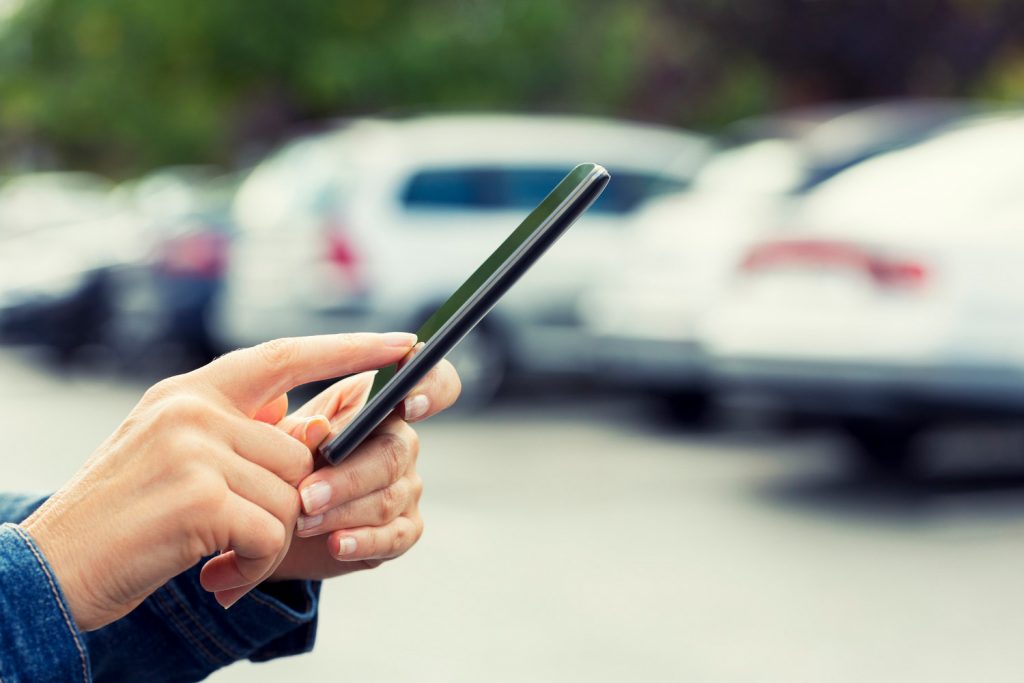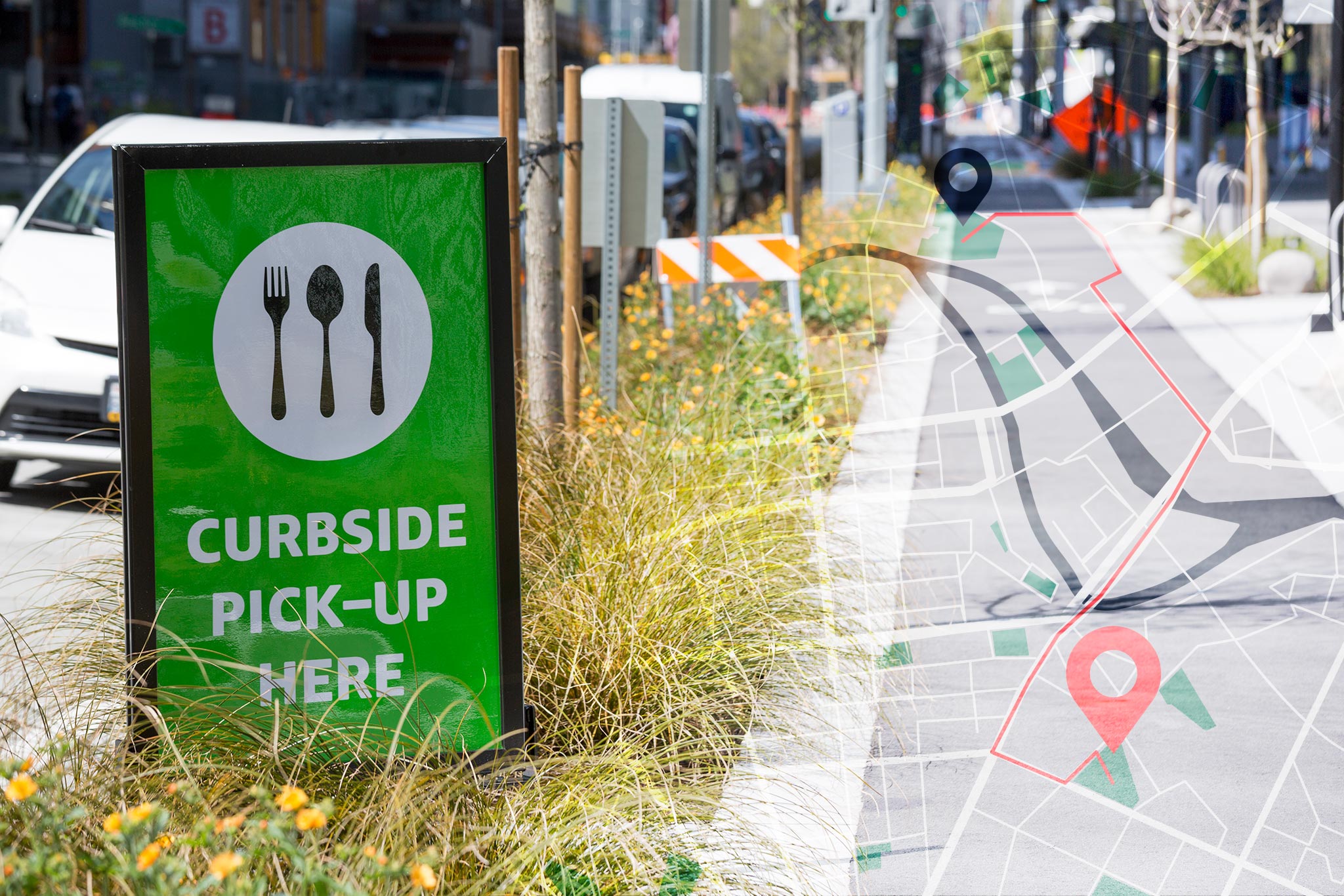By Chrissy Mancini Nichols and Kevin White, AICP
A global public health and economic crisis of epic proportions, the COVID-19 pandemic and its effects have been enormous. The crisis has had an immense impact on global public health, economies, and our social and cultural fabric. It has affected our lives in a multitude of ways: the way we work, how we interact with others, how our children are educated, how we travel, how we access food and goods, and myriad others.
Our perception of personal safety and the world we live in has been altered. We limit our trips into public as much as we can, we wear masks and gloves, and we practice social distancing. We have all adapted on the fly and are working hard to connect with others and get in touch with what good might come from this whole experience. We anticipate this “new normal” will be around for a while, with lasting effects on our lives for years to come.
At airports, on university and college campuses, and in cities across the United States, the stay-at-home orders have caused dramatic reductions in travel and parking demand. Many cities have removed paid parking or are relaxing enforcement of time limits. Cities are adapting on-street parking areas to accommodate restaurant curbside pick-up and drop-off zones.
Parking revenues in many cities are down 80% to 90% from pre-pandemic conditions. Cities rely on this revenue to both fund important public services and pay debt.
Parking managers are examining their staffing and expenses for cost saving potential, all the while considering what their operations look like when states and cities reopen. Operations are deftly adjusting to new work conditions and doing what they can to stay focused on essential tasks, such as examining internal procedures and catching up on maintenance activities.
For better or worse, COVID-19 presents an opportunity to experiment with parking and curb management over the next year. How can we implement plans and policies that support business and public health and are community-appropriate? At the end of this, we will have a year’s worth of data and learnings.
Why not take those learnings and re-imagine the future of our parking and transportation systems? Many of these systems were created a century ago and simply adapted over time to fit new technologies or schools of thought. How would these systems look if we built them today?
We should completely rethink how our streets, curbs, and parking promote access, move people around in the most efficient manner, and bring the most economic and societal returns. Cities that consider these changes now could have an economic advantage as we emerge from this crisis.
The “New Normal”
As the curve flattens in the US, states and cities are beginning to reopen their institutions and economies. This reopening will occur at a different pace depending on local conditions and leadership. The expectation is that the reopening will be phased across different business and cultural sectors with new regulations and restrictions in place. For example, we are likely to see continued restrictions on crowd size, events, workplace limits, capacity of indoor spaces, and others. This phased reopening will likely occur over the summer and into the fall, and public health officials will be monitoring progress closely to guard against new waves of infection.
Prognosticators in the industry are theorizing a sustained increase in telecommuting, now that employees and employers see the virtues of working from home. Transit use could drop, with a corresponding increase in single-occupancy vehicle use, as people look to maintain distance. We are re-examining the allocation of space for pedestrians and cyclists in the age of social distancing, especially as they compete for space with the increased use of commercial delivery services and curbside pick-up and drop-off.
These restrictions will impact travel behavior and parking demand, but there is a great deal of uncertainty inherent in all of this. The truth is none of us really know how the next several months or the next one to two years will play out. We can’t predict the exact effects on travel behavior; what the parking demand profile will look like, or how these will fluctuate.
All we can do as an industry is focus on our people, assets, mission, customers, and processes and procedures. While the future is uncertain, cities are charting their path forward and focusing on taking care of their staff and serving their public mission.
Parking and Mobility Roadmap to Navigating the “New Normal”
As cities chart their course for the path ahead, we present this roadmap of considerations of best practices for municipal parking and mobility planning and operations. This roadmap is based on known realities that we can recognize now and is meant to prepare us for the uncertain road ahead. The considerations in the roadmap are based on discussion with industry peers, municipal operators, and learnings from industry webinars and shop talks.
1. Audit your operations to identify inefficiencies and cost saving measures
Municipalities have used this time to look inward at their operations as they examine ways to adapt to new realities of declining parking revenues, the lifeblood of any municipal operation. As conditions evolve, auditing your operations to identify inefficiencies and cost saving measures is essential. Audits should be conducted regularly and involve all levels of municipal organizations from administrators to the front-line team.
Among other topics, audits should consider:
- Staff levels and organization
- Standard operating procedures
- Revenue and expenses
- The use of backend and frontline technology to improve processes and management.
Inefficiencies might arise from redundant tasks, or not leveraging available technology to manage permits, conduct enforcement, or collect revenues. Conducting peer reviews as part of your audit process allows you to benchmark against peer city operations. When conducted thoughtfully, audits have the potential to be both valuable and educational.

2. Leverage data and key performance indicators to understand the parking demand profile and adjust operations accordingly
There is inherent uncertainty in what the parking demand profile will look like in the months ahead. Will we see significant gains in commuter parking demand if some people avoid transit? Will telecommuting for some workers continue? Will users prefer on-street and surface lot spaces instead of more enclosed parking garages based on perception of health risk? Will curbside pick-up and drop-off activity continue to see gains? What demand will we see for parking lots, garages, and curb space to be used for outdoor dining, social distancing, and other non-parking functions?
There has never been a more important time to embrace performance monitoring and data analytics, and to integrate data analytics into your parking management process. Collecting and analyzing data related to on- and off-street parking transactions and occupancy, parking duration/turnover, pick-ups and drop-offs, commercial loading zone activity, and others will be critical. This data can help us understand the preferences and patterns of users relative to pre-pandemic levels as they emerge from their stay-at-home orders and re-engage with cities and the economy. Data can help to appropriate operational resources and adapt infrastructure and management strategies dynamically. Data is also a powerful ally in communicating parking rate and management changes to leadership and the public.
There has never been a more important time to embrace performance monitoring and data analytics, and to integrate data analytics into your parking management process.
3. Create a framework for adjusting your on-street rates and enforcing your curb
Revenues have dropped dramatically as parking demand has declined with stay-at-home orders. Some cities have continued to charge for parking, some have significantly relaxed enforcement and/or time limits, and some have dropped paid parking altogether.
Re-instituting paid parking will be critical as stay-at-home orders are lifted and cities reopen, from both a revenue generation and a parking management perspective. This will be a delicate process, as parking operators must navigate the sensitivities of both government officials and the public.
It may be helpful to remind the public and officials that paid parking is an important curb management tool. It creates on-street parking turnover, making it easier for visitors to access businesses. Parking operations can also relieve the pressure on city officials looking to stem the tide of declining revenues and refill city budget coffers.
Establishing a framework now for setting and adjusting rates is essential. If your operation has lowered rates or removed paid parking entirely in response to COVID-19, it’s critical to think about:
- When and how paid parking will be re-instituted
- What the rate structure will be
- How and when rates will be adjusted moving forward (especially critical in cities with demand-based pricing)
- How changes will be communicated to the public
- How time limits and enforcement will be used in conjunction with rates.
Re-instituting paid parking will be critical as stay-at-home orders are lifted and cities reopen, from both a revenue generation and a parking management perspective.
4. Prioritize flexibility and adaptability and test new ideas to rethink your rights-of-way
Cities have quickly responded to COVID-19 by adapting the public realm to this unique time. Many local governments are dedicating parking spaces to curbside pickup, creating “slow streets” to allow people to be outside and get some exercise, providing temporary bike lanes with paint and cones, and building parklets to help restaurants add more space to meet new capacity reduction requirements.
These temporary, inexpensive public improvements can be built in a day, but they can also have a long-term economic and livability payoff. They avoid what often overshadows infrastructure investments: a big price tag that means permanence—and push back. People can see and feel the change and try it out themselves, without the barriers. We can then learn in real-time what works and adapt based on data.
Let’s create conditions now to rethink our streets, our parking, and our curbs to help business and promote public health. Then, in the long-term, the bike lanes, parklets, and whatever else we’ve tried will become attractive, easy, and familiar options for people and business. What was once scary and untested will become a regular tool, built into the framework of our system. This allows us to achieve the goals of moving more people, providing more access, and making our communities more livable.
Let’s create conditions now to rethink our streets, our parking, and our curbs to help business and promote public health.
5. Market and communicate actively with your customers
In uncertain times, communication and marketing are vital in improving predictability and user comfort. Municipal operators actively communicate with the public on matters such as:
- Protocols for cleaning facilities and equipment and keeping staff and the public safe
- Real-time information on parking options and availability
- Parking rates schedules and adjustments
- Parking management changes
Be sure to share the great things your operation is doing to benefit the community. Use clear data and metrics to communicate the reasons for and benefits of rate and management decisions. Consider partnering with business or civic organizations to offer parking and transportation incentives (like parking validation) that bring people back into your community and visiting local businesses again.
6. Follow appropriate health guidelines and communicate safety procedures to the public
We all have looked to our local, state, and federal health officials during this time. Municipal parking and transportation operations have been similarly monitoring the latest on local conditions, recommendations, and restrictions in shaping their own operations. Equipment and facility cleaning procedures are being reviewed and adjusted to ensure they are in accordance with new guidelines.
To protect the health of parking and transportation workers and the public, and to boost user confidence, abundant communication about cleaning procedures is important. Let the public know that you are open for business, what they can expect, what their options are, and what you are actively doing to keep them safe.
7. Embrace mobile payment and contactless solutions
There is little doubt that this public health crisis will continue to increase the use of “contactless” payment options for both on-street and off-street parking, reducing the need for customers to touch shared equipment. Ensuring parking meters and kiosks are continually sanitized during enforcement hours is simply not feasible. In response to the pandemic, some cities are pushing for broader use of mobile payment options.
Data indicates that even prior to COVID-19, there was an approximate 80% market penetration rate for smartphones. Over the past several years, mobile payment platforms have seen higher adoption rates in many cities, as municipal operations have moved away from single space parking meters to “asset light” operations backed by multi-space pay station kiosks and mobile payment options.

Some mobile payment options allow the use of phone-credentialed technology like Apple Pay and Google Pay, QR codes, or even texting to pay for parking. Considerations should be made for unbanked users, such as offering the purchase of prepaid parking cards. Data streams from mobile payment options can be a powerful tool in assessing parking demand and adjusting pricing.
In the off-street environment, proximity cards and vehicle identification tags enable a contactless experience for contract users. Perhaps more important in this new normal is payment collection for transient users. License Plate Recognition (LPR), QR/Barcode functionality, and Bluetooth technology are all helping to provide contactless parking for non-contract parking customers. Third party applications can offer advance parking reservations. Many upgraded Parking Access and Revenue Control Systems (PARCS) can handle phone-credentialed mobile payment.
Beyond payment collection, advances in license plate recognition, virtual permitting, electronic ticketing, and cloud-based technology have the potential to push parking enforcement to a more contactless and automated process as well.
8. Identify ways in which you can enable and capture shorter parking sessions
With uncertainties around ongoing stay-at-home restrictions and work-from-home orders, a reasonable expectation is that we will see fewer people coming into the office on at least some days. Many employers and employees may continue work-from-home practices by preference, having become accustomed to the benefits. Restrictions or new work practices may cause employees to come into the office for certain collaborative sessions or only certain days of the week.
This all results in the need for flexibility and more parking options, sold in shorter durations, both for on- and off-street parking. Flexibility, especially the option to purchase shorter, more transient parking sessions without the sunk financial commitment, may help capture demand and revenue, improve customer satisfaction, and facilitate parking turnover. Facilitating shorter parking sessions also enables operators to more closely monitor parking demand and supply, and calibrate parking management policies to reflect current conditions.
9. Understand the true value of your curb assets and consider new sources of revenue
For now, stay-at-home orders have reduced parking demand and the associated revenues. While the long-term impact is uncertain, this has highlighted the importance of a diversified revenue portfolio to mitigate the effects of any one negative funding source.
Before COVID-19, dockless scooters and Ride Apps (such as Uber and Lyft) were changing how people get around. These shared mobility tools were affecting parking demand, potentially reducing traditional parking revenue as more curb space was dedicated to uses other than traditional paid parking. Looking to the future and the advent of autonomous vehicles, evolving travel behaviors will continue to affect the need for parking. Further, consumer behaviors that have only grown with the current situation have increased demand for short-term use of the curb by commercial delivery vehicles, which will continue.
Because parking revenues are a critical source of funding for essential services, and even back-up bonded debt, it’s important to proactively plan for the evolution of changing mobility to meet both current operations and long-term financial obligations.
Curb space is finite and should be treated as a valuable asset. This means implementing the right mix of plans and policies to both accommodate current and future transportation needs and adapt dynamically to the ever-evolving transportation and mobility industry. The curb must be designed, managed, monitored, and monetized to handle the increase in pick-ups, drop-offs, deliveries, scooters, bikeshare, carshare, and other uses. Parking operations should look to data analytics, policy, and technology to capture the complete and true value from limited curb space, even as the curb demand portfolio changes.
Curb space is finite and should be treated as a valuable asset.
10. Collaborate and learn from others
The parking and mobility industry is very much a close community. As a group of collaborative professionals, the industry is based on relationships and the sharing of ideas. There have been a variety of webinars and shop talks sharing what folks are experiencing, how they are adapting, and how they are planning for an uncertain future. Organizations like the International Parking & Mobility Institute (IPMI) are acting as resource hubs, connecting members and others to valuable information.
Collaboration and idea sharing will continue to be critical in the path ahead. If your city is dealing with a particularly challenging issue, chances are several others are as well. Adapt practices of others into your own program. We are all in this together.
Stepping into the Future
The effects of this crisis are immense. The parking and mobility industry is adapting and charting the path forward. Embracing transparency, technology, flexibility, and a spirit of collaboration will help us navigate this new normal and shape a better future for our communities.
Chrissy Mancini Nichols is a Parking and Mobility Consultant with Walker Consultants and is based in San Francisco. Chrissy specializes in a holistic approach to parking and mobility planning and policy. She leads Walker’s curb management strategy.
Kevin White, AICP is a Parking and Mobility Consultant with Walker Consultants and is based in the Twin Cities, Minnesota. Kevin specializes in strategic parking and mobility planning for municipal, university, and other clients.

